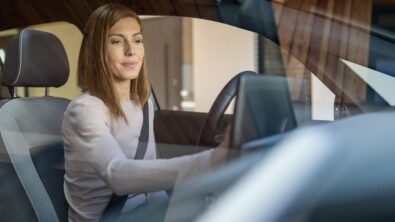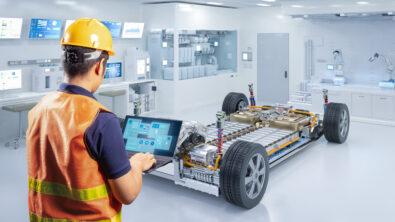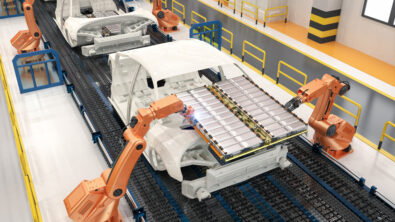Shared cars, big data and Pokemon Go
In a recent blog I looked at the future of mobility, where electrification, autonomous drive and consumer demand will pull us towards new models of getting from A to B. It also touched on vehicle ownership models, and following that Elon Musk published his Masterplan Part Deux, which suggested Tesla owners could rent out their vehicles when not being used, creating a combined model of owned and shared mobility. “Mr Musk also seemed to suggest his company would one day compete with the likes of Uber and Lyft for personal transportation,” wrote the BBC’s Dave Lee.
The risk-reward calculation doesn’t immediately add up given the obvious objections: who will want to loan out their premium brand, $100k vehicle to strangers? How do you ensure that the battery doesn’t get swapped out by less than scrupulous renters? And what about when there’s an emergency and your vehicle is on the other side of town? Now let’s assume the millennial mindset: a low-cost Tesla is in production, securing components is just another solvable technical problem, and you are out of town anyway when you give up your car. So let’s assume enough of us embrace this future Airbnb of automotive. Your car is utilized 90% of the time instead of 90% of the time sitting in a parking lot. Why could this become a new reality for future mobility solutions?
The car today is a hugely depreciating asset that we pay a lot for the privilege of owning. Even premium brand vehicles with modest rates of depreciation will not ever make a return, except perhaps the outlier distribution of classic car collectibles. The Tesla model, whilst arguably a Musk-ism (that is more targeted at investors), counters potential future Uber robotaxis head on with a shared mobility platform. This really opens the discussion about vehicle ownership becoming a profit-center for car owners instead of a household expense. There are two different models of revenue-creation with future car ownership: renting out your car when not in use like the Airbnb for automotive, and ‘selling’ part of your personal driver data to offset the purchase price of the vehicle.
Larry Burns fabulous presentation at the recent Mentor Automotive IESF conference illustrated that shared mobility could reduce out-of-pocket car ownership expense by 75%, and simultaneously respond to trip requests in less than 2 minutes with a 98% utilization of loaded miles v empty miles (vehicle traveling between trips). Cost per mile (time value and money cost) drops from $1.60 / mile to $0.25 / mile. The historical automotive business model of selling cars, gasoline, insurance and financing is moving to a new model of selling miles, trips and experiences. Let’s take a shot at putting in some numbers for the Tesla owner that wants to share his vehicle: the $0.25 cost per mile with, say, 50,000 leased miles per year returns a theoretical gross $12,500 per year. With a Tesla Model 3 starting at $35,000 the theoretical guesstimate model here means you are gross cash neutral after 3 years, with a little left over towards maintenance and liability insurance, which will be on an insure-per-mile basis. And don’t forget electric cars have vastly fewer moving parts than our beloved gasoline powered machines, no fluids and long term maintenance means changing the wiper blades and tires. Until that battery packs in.
Then you can offset the purchase price by offering up all sorts of data: on miles driven, what grocery stores you visit and when, what car dealerships you go to and which ones you drive past, where you buy your coffee and when, what you listen to, and what ads resonate with you. All this data can be filtered by known driver profiles. Although I’m no fan of targeted ads, this is the today reality, and offering up ‘freemium’ car ownership models is the logical extrapolation from today’s data driven enterprise. This type of opt-in model is a big-data dream, highly valuable and something we as consumers can trade. Think the Pandora of mobility — sell your data and your car is free with ads.
This means significantly fewer cars on the road. We can have 18,000 shared vehicles providing the same mobility as do 120,000 owned vehicles today, according to Larry Burns at IESF. Inevitably many people that own will rent out their vehicle during downtime. And they still will have that SUV available for prime time weekend use and spring break road trips. Those that need to purchase miles can do so. Car utilization increase means more miles accumulated per year, and shorter vehicle lifetimes (although by how much is unclear as electric vehicle lifetime data is not available yet). Shorter vehicle lifetimes means more automotive churn, with new cars on the road more frequently, and faster product life cycles. The consumerization of the vehicle continues.
What does this mean for vehicle development? Car connectivity today is a perfect storm of complexity, requiring solutions such as Mentor Automotive Capital, a software suite for platform engineering that allows car OEMs such as GM to optimize their EE systems for functionality and cost, even on a per-car basis. Consider the many EE-related additions to today’s designs: more high-speed communication lines to handle increasing amounts of data, multiple screens around the vehicle and multiple voltage domains for the electrification of the vehicle. The task of designing and building vehicle EE architecture and system implementation is unrecognizable compared to what it was like a decade ago. What hasn’t changed is that vehicle architecture, today and in the future, is safe, secure and economically viable. It has to be.
What does the changing ownership model mean for embedded software? We know there are 100M+ lines of software in high-end cars today. This comprises multiple operating systems, secure separation of function using hypervisors and the application software in the 100 or so ECUs peppered around the vehicle. The microprocessor and software that powers Pokemon Go on your smartphone is not what you want to have making decisions in your semi-autonomous vehicle: the Linux operating system has to be hardened, the microprocessor has to adhere to strict design and test rules, the silicon is structurally different from any consumer grade SoC, and the whole system has to provide zero-defect reliability for the lifetime of the vehicle. Integrating Linux and Autosar is no trivial task, ask any automotive tier 1. And that is just one example. Mentor Graphics is an established leader in providing the silicon design tools for automotive grade processors, innovative test software solutions for transistor-level test coverage and reliability testing, and the embedded software platforms that provide assured automotive reliability and reduce months from the software platform development cycle-time. This is the front-to-end platform level solutions that has and will continue to characterize vehicle EE system design.
Automotive megatrends (connectivity, autonomous, electrification and mobility on demand) are getting all the media coverage at the consumer level, and rightly so. They will transform how we live. But the under-the-hood technologies that make this happen are just as transformational. We are entrusting our lives, and our families’ lives, with safer automotive technologies, and we need to be aware of how it all comes together. As a society we know more about how our smartphone is engineered, what processor it has, and what software it runs, than we do about our cars today and tomorrow. Pokemon Go might be the tech darling of the hour, but that doesn’t mean we couldn’t all benefit from an occasional peek under the hood. Or the bonnet, as we say in Scotland.


